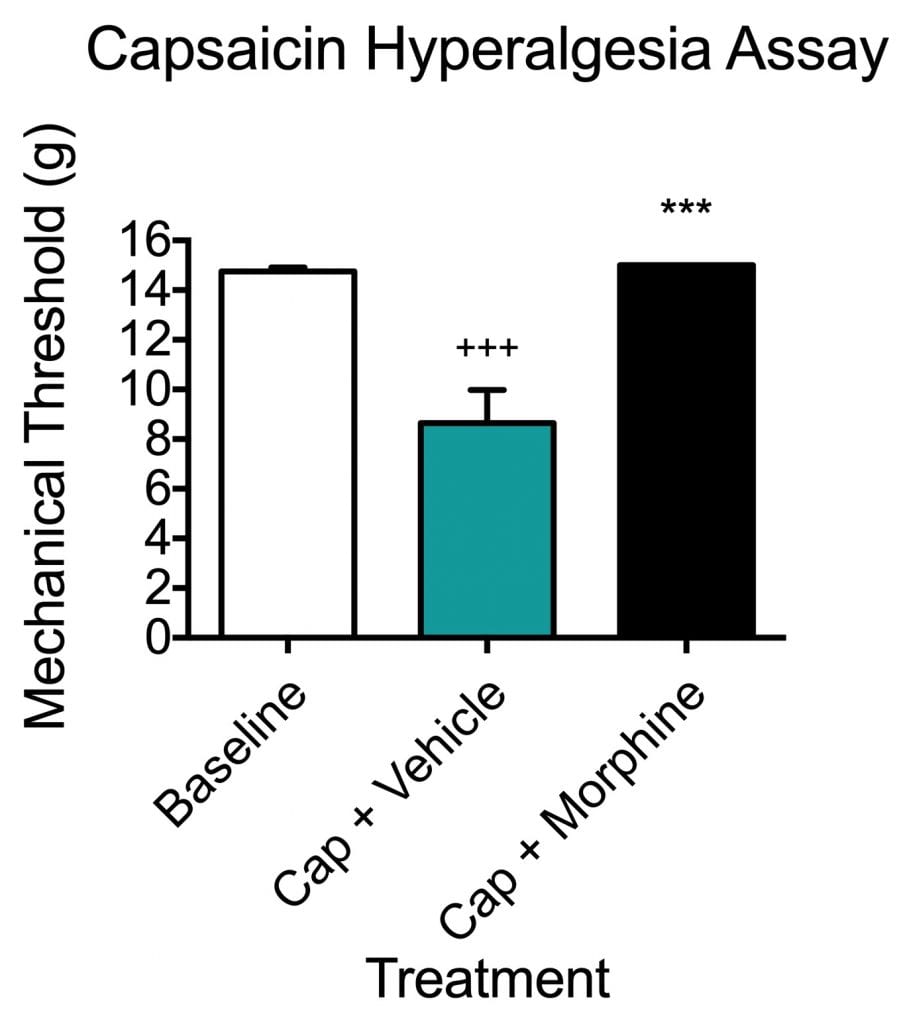Capsaicin Hyperalgesia
Discover how Melior’s unique phenotypic screening platforms can uncover the untapped value of your candidate therapeutic
Direct injection of capsaicin to rodents induces a hyperalgesic response by activating the vanilloid receptor and subsequent release of neuropeptides including substance P. Capsaicin-mediated pain is responsive to a variety of analgesic compounds including morphine.
We use the capsaicin hyperalgesic assay to evaluate efficacy of compounds for analgesic activity. It has properties that complement some of the other acute pain models that we run, such as Formalin Analgesia model.
As with other acute animal models of pain (such as the Carrageenan model) it can be assessed with mechanical nociception (e.g. Von Frey), thermal nociception (Hargreaves, Hot Plate) or cold nociception (Cold Plate) methods. The study below outlines a typical experiment wherein pain response was measured using Von Frey filaments.
This model is 1 of more than 60 models included in our theraTRACE® platform
Ready to get started or looking for a custom model?
Contact us today for more information about our bespoke research models and to discuss how we can help you answer your unique research questions.
Interested in running an Insulin Tolerance Test study?
If you are interested in learning more about the Insulin Tolerance Test (ITT), please contact us to start the conversation today!

Rats were evaluated for baseline thresholds using Von Frey filaments before initiating treatment. Seven days after baseline testing, rats were treated with capsaicin to induce hyperalgesia and increase sensitivity in the hind paws. Rats that were treated with vehicle had significantly reduced thresholds compared to baseline. Morphine treated rats had significantly increased thresholds and reduced sensitivity compared to vehicle treated rats. Data are mean ± SEM; +++p<0.001 compared to baseline, ***p<0.001 compared to capsaicin alone (N=12).
The Capsaicin Hyperalgesia model is typically run in an acute mode (study completed in one day) by evaluating test articles after a single administration. The variability is relatively low and statistical significance may be achieved with group sizes of about 6 to 8 animals. It can be performed in both mice and rats, and as indicated above, can also be assessed using alternative or even multiple methods including Von Frey, Hargreaves, Hot Plate or Cold Plate.





